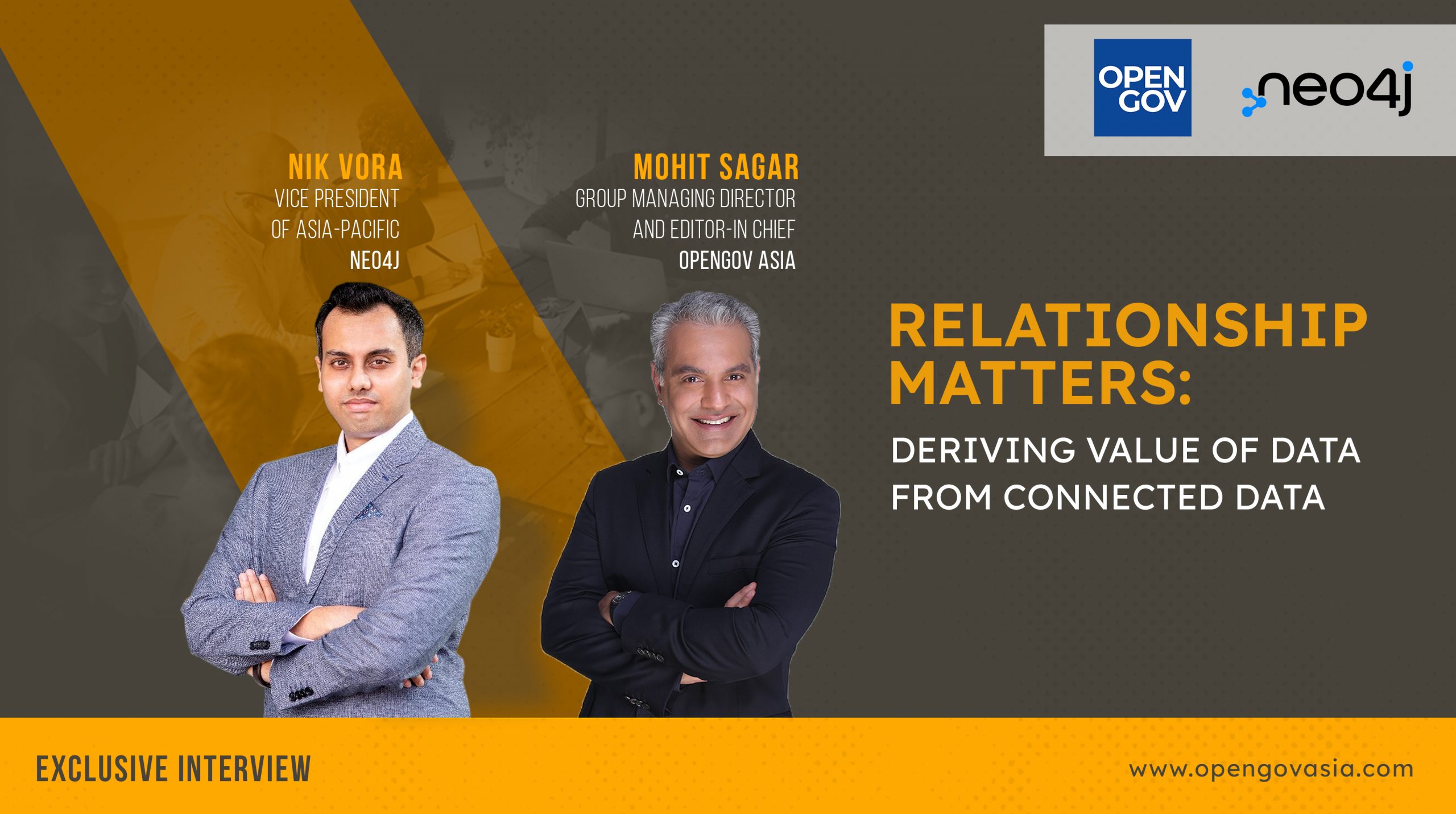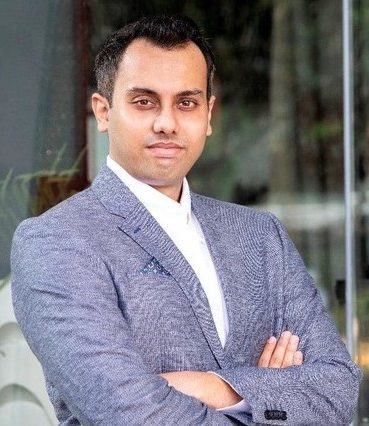
Data is increasingly at the core of any business or organisation and is underpinning digital strategies and initiatives more than ever. Data has become a key component of digitalisation and the driving force behind and fuel for analytics, machine learning, edge computing, cloud and other cutting-edge technologies.
As the need to respond more quickly, indeed in as near real-time as possible, data will rapidly become the key competitive advantage. A company’s capacity to compete will be determined by its ability to leverage data – apply analytics and generate intelligence.
Mohit Sagar, Group Managing Director and Editor-in-Chief, OpenGov Asia agrees that “data is the new oil”. But like oil, raw data is not particularly useful in and of itself. Information – processed data – swiftly becomes a decision-making tool that allows businesses to react to market dynamics and make proactive and intentional decisions. The real value of data offers timely actionable insights, trends and projections that can help organisations survive and thrive in a VUCA world.
Generating data is not really the issue at hand. Both the public and private sectors, for the most part, hold massive volumes of data and continue to add to it. Albeit, this has been fairly unorganised and siloed, making it difficult to access and process.
The question is: how can agencies and organisations best derive real value from these mountains of data, which are often distinct, distant and diverse? How do they collect, analyse and rationally build patterns and interconnections to improve decision-making and planning?
While organisations have been deploying AI and ML to gain and analyse insights from the data, a new platform has emerged that has the potential to offer deeper insights – Graph Data Platform.

OpenGov Asia had the opportunity to speak with Nik Vora, Vice President, Asia-Pacific, Neo4j to gain his insights on the importance of a Graph Data Platform and how organisations can derive actual value from it.
Nik Vora is the Vice President of Asia-Pacific at Neo4j. Nik has over 12 years of expertise in the tech industry and joined Neo4j as the company was looking to grow its operations into the Asia Pacific area. In his present position, he oversees the APAC business, which develops solutions for businesses and communities to see the connections and linkages among massive amounts of data to make better decisions.
Genuine innovation or repackaging?
Mohit is keen to know, is this just old technology in new packaging or is there legitimate value-add? If yes, what do organisations gain from a Graph Data Platform?
Nik Vora is quick to clarify that the tool is important because it has the capability to extract the inherent value in the data itself. Data needs to be seen as a network and not merely discrete data points – and the best way to visualise these relationships is in graphs.
A Graph Data Platform considers the relationship between data to be just as significant as the data itself. The purpose of the technology is to store information without restricting it to a pre-defined model. The data is maintained in the same way that is initially collected, with each unique item connected to or related to others. In a native Graph Data Platform, accessing nodes and relationships is a speedy, constant operation that allows one company to traverse millions of connections per second per core.
Companies, agencies and any organisation in the ecosystem, according to Nik, are looking to exploit gain from data. Over the last 24 months, there has been a massive acceleration of digitisation – of supply chains, processes, services and transactions. This has pushed more information online and allows more data to be captured. In turn, businesses rely increasingly on data, leading to more optimisations, depending on how much value an organisation can create from data.
As data becomes more distributed, dynamic and diverse, it is important to capture it in real-time and process it to drive rapid action and feed into strategy, Mohit opines. This means that data needs to be on hand for those who need it. The importance of data availability and accessibility anytime and anywhere is even more pronounced in the current crisis. This is especially true for organisations engaged in providing mission-critical, customer-centric services.
Wholeheartedly agreeing, Nik says the greater the demand for data-driven insight and intelligence, the more important it is to grasp the importance of connectedness in existing data. A Graph Data Platform is uniquely positioned to do this. Since it is modelled as a graph and a network, a Graph Data Platform is the ‘most obvious approach’ to look at connections. “The value of relationships itself is the underlying drive for this technology,” he explains.
Investing in data analytics and technologies without first determining what your specific organisation need to succeed is indeed a waste. It is necessary to first build a big data strategy to get the most out of the data a company already has or plans to collect. A big data strategy lays out how data will be used in practice and what kinds of data a business needs to meet specific business goals.
However, does this means that all organisations should reconsider their entire data collection strategy, including how they acquire, store and distribute data? This, Mohit feels, would be markedly prohibitive.
The answer to this is actually a bit of both and while there is an investment involved it is not unreasonable, says Nik. Organisations do not need to modify their data, but they do need to change their perspective.
The key concern should be how data is connected and how it relates to other data sets and points. Organisations have spent many years building data lakes and data warehouses and that all the data that any organisation could need, already exists. What they need to do now is turn on the tab and start looking at the relationships between different data that are connected across silos, processes, networks and transactions.
The challenges and advantages are that it is a very dynamic world. And, given this new understanding of how interconnected everything is, if an organisation does not have a linked data strategy – where they look at data, how it connects and what relationships and dependencies exist – they are missing out on a huge potential.
Many businesses rely on data to assist rather than drive their operations. But why is that? After all, data is only valuable if it can be turned into actionable insights. Finding out what you want from your data and determining its worth is the first step in gaining these insights.
“We are all gaining insight from our existing data in some way,” posits Nik’s. “Organisations should be more intentional about it if they are to gain genuine advantages.”
Within an organisation’s ecosystem, there are many existing relationships and connections. With the plethora of technologies, ecosystems and capabilities available, Nik believes that the ideal time to start investing is NOW. But investment is not just in technology but in people!
Data and analytics leaders are often perceived as the gurus of graph technology, but the truth is, Mohit points out, many still don’t comprehend it themselves. This means that there has to be an upskilling of the entire workforce if a company wants to gain real value from data. So, how do companies get started?
The strategy, Nik believes, is two-pronged: training and staffing. Organisations must empower their existing workforce to understand the value of and how to use a Graph Data Platform. Above this, they need to bolster organisational capacity by hiring the right people. Although there is a lot of great talent in the market and a relatively large pool, Nik advises caution in recruitment as skills are relatively easy to fake.
“When you embark on a project or a journey, you have enough (and more talent) in the partner ecosystem, as well as the deployed developer ecosystem, where you can source people from,” Nik acknowledges.”However, it is essential to be careful that potential candidates go through a rigorous selection process.”
Big Data can have ‘infinite value’
There are a lot of one-line proverbs and truisms to push unnecessary products. One is “big data can have an “infinite value”. Is this factual or just another way to justify more expenses on the books.
“The simple answer is that it is up to an organisation to decide how they budget their funds. But it is better to look at it differently. It’s not intrinsically about just money,” Nik explains. “It’s the perspective organisations have of tech. Do they see it as an expense or an investment?”
Yes, companies, in the short term, and tangibly, invest their resources, time and effort, but, more significantly, they are investing their company’s future based on the decisions they make. A case in point is fraud.
“If you look at fraud detection alone, fraud detection has gone offline as well as online; it’s an omnichannel; it’s not just one Forster dealing with one credit card somewhere.”
Fraud detection and anti-money laundering depend enormously on exposing connections and patterns. With the new Neo4j Graph Data Platform, which incorporates both the Neo4j graph data science and the code database, detecting fraud is considerably easier now and Neo4j has discovered millions of new frauds from its technology.
So going in for a Graph Data Platform now does mean an expense in terms of investing in the technology, training people and setting systems; but it has massive RoI down the line, in addition to protecting a company’s most valuable assets – market reputation and customer trust.
Case Study
There is a whole new thrust of marketing to customers personally – It’s no longer just a store or an e-commerce website. With people are on social media, rating platforms and a host of mobile apps, getting a complete customer 360 is much more difficult and complex than before. Organisations are increasingly relying on numerous consumers touchpoints to gain a more comprehensive picture of each customer.
To add to the complexity, an organisation can have a million customers or more, with data points spread across billions of records from transactions, events and sensors.
One of their customers AirAsia – one of the largest and most well-known airlines in Southeast Asia – saw a 300% spike in the test group after employing Neo4j’s craft data science. This was because Neo4j was able to gain a significantly deeper grasp of the customer from a single consumer perspective.
To do this, Neo4j did not discard any of the other company’s technology, but instead layered theirs on top of the existing ones, combining all the company’s assets such as data lakes, data warehouses, and data science notebooks, to the power of the Graph Data Platform. As a result, there was a massive performance improvement.
Proof of the pudding is in the eating
While claims are easy to make, the test of the effectiveness of a technology is the success it has in real-life applications. AirAsia apart, the company has a wide spectrum of financial organisations that deploy their solutions.
Neo4j counts a whole host of banks as their satisfied customers including Standard Chartered, prominent banks in Singapore and one of Australia’s largest banks. Most recently. Neo4j partnered with DBS for their hackathon – DBS’s flagship event.
At the same time, Neo4j has a big number of on-premises start-ups, as well as cloud and digital native accounts, all of which are using the Neo4j cloud experience in APAC.
These organisations represent the best in their sectors, and they are at the top because they invest in technologies that help them progress. Findings indicate that Graph Data Platforms were used in 50% of all Artificial Intelligence projects. This is because incorporating a Graph Data Platform into an organisation’s existing AI strategy offers significant improvement at a low cost. The investment is minimal and corporations can increase confidence scores and outcomes for a fraction of expenditure in other solutions.
Embarking on a new transformational journey
Graph analytics applications use algorithms to traverse and analyse graphs to uncover and potentially identify intriguing patterns that represent business prospects.
Business operators can have a better understanding of what they are doing efficiently and inefficiently within their businesses by analysing data. Professionals with an analytics background are capable of answering critical questions once a problem has been recognised.
While Mohit concedes that businesses are on the top because they invest in technologies that help them progress, the pertinent question is: what made them decide to use this technology and how did they get started?
Answering with another truism – the early bird catches the worm, Nik feels that in all likelihood the leading companies had a combination of higher risk appetite, vision and gut instinct. With trailblazers leading the way, the question now isn’t so much about how do companies get started but when do they get started?
With the gains seen in the companies that already deploy Graph Data Platforms, others are eager to climb on board. But they seem to be unsure about timing and the most opportune stage to do so.
“We are seeing a lot of other companies that are inspired by these pioneering companies’ successes and are putting a lot of faith and stock in our technology,” Nik acknowledges. “Leaders in any organisation have to understand that technology is an investment and that everyone must embark on. The time is always right to invest in such technology!”
For more information on Neo4j visit https://neo4j.com/





















